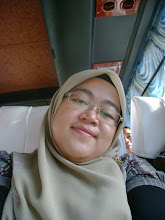Tugasan 2
-Dapatkan 3 jurnal luar negara yang memerihalkan kajian tindakan yang telah dilakukan dalam pendidikan. Lakukan perbandingan (persamaan & perbezaan), penganalisisan, penilaian, perumusan & pengsintesisan dari segi sampel, seting, prosedur kajian, pengumpulan dan penganalisaan data yang dilakukan oleh penulis artikel dan dilaporkan dalam blog individu.
-Disokong oleh sumber bacaan lain ~ buku kajian tindakan (tugasan 1)
-Upload semua artikel dalam yahoogroups mengikut folder individu (http://groups.yahoo.com/group/gb5023-jan09/)
Tarikh serahan: 26 Mei 2009.
Selected Journals:
1) Summers, S.J., Bergin, A.D. & Cole, S.J. 2009. Examining the Relationship among Collaborative Learning, Autonomy Support and Student Incivility in undergraduate Classrooms. Learning and Individual Differences. (19). 293-298.
2) Mary Jane Moran. 2007. Collaborative Research and Project Work: Promising Practices for Developing Collaborative Inquiry Among Nearly Childhood Preservice Teachers. Teaching and Teachers Education. 418-431.
3) Gunel, M., Hand, B., & McDermott, A. M. 2009. Writing for Different Audiences: Effects on High-School Students Conceptual Understanding of Biology. Learning and Instruction. (19). 354-367.
Three journals were selected and downloaded from e-journal databases. These journals were concerning action research in education.
A) Similarities:
Setting:-
All research were collaborative action research which were carried out in classroom settings.
B) Differences:
Journal 1:
1) Sample / Participants:
- Undergraduate students (age approximately 19 years old) with total number of 1160 students; 598 males and 562 females.
2) Design / Procedure:
- Participants recruited were from 164 Faculties at Midwest University.
- 15 Instructors agreed to be the research team.
- This research used surveys approach. Two types of survey administered during the course semester; Student survey and Faculty survey.
- Student surveys were administered late in the semester in order to provide basis for rating classroom experience.
- 3 issues were asked in student survey items; classroom community, interactive learning and autonomy support.
- Faculty survey items focused on academic incivility and collaborative learning.
- Data from both surveys were collected and analyzed using software called EQS to validate the scales of student survey. Calculation RMSEA and Chi square were made to observe the effectiveness of measured parameters.
Journal 2:
1)Sample / Participants:-
- 24 preservice teachers. All females, Euro-American and resided in the same area.
2) Design / Procedure:
- 24 preservice teachers enrolled in an introductory early childhood education were selected.
- Participants were randomly assigned into groups consisting of 3-4 members each.
- Each group was required to implement a 6 week project to a small group of preschool-aged children (age 3 years old).
- This research was conducted in 2 stages;
1) Stage 1: participants were invited to involve in a retrospective interviews at the end of the course. 10 agreed to be interviewed.
2) Stage 2: aimed to minimize the variability across the team. Criteria for selection were; each team consist of the same number of preservice teachers, they taught the same age children and taught the same number of practicum days across the semester.
- Instruments / analytical tools used were journals, video tapes, transcription of audio tapes, discussions and retrospective interviews.
- The course included practicum and lectures (weekly) and divided into 3 phases over a15 weeks.
1) Phase 1: Orientation weeks in which preservice teachers kept daily journal, making observation, audio taped and transcribed children’s’ conversation, critiqued video tapes of master and novice teachers, and created topic and concept in order to choose relevant project topic.
2) Phase 2: Implementation of collaborative project. Utilization of classroom documentation for guidance and informing their cycle of inquiry.
3) Phase 3: Interpretation of the project for preparation of writing and oral analyses.
- Retrospective interviews were semi-structured and conducted at the end of the course. 10 preservice teachers were interviewed.
- Data obtained from the analysis of journals, video tapes, and transcription of audio tapes, discussions and retrospective interviews. - Data were cross-tabulated and recorded in charts and matrices using constant comparative method across time to organize behaviors of individual preservice teachers as well as team.
Journal 3:
1)Sample / Participants:
- Junior/middle school students. In total 118 students were involved. (50 males & 68 females).
2)Design / Procedure:
- This research used quasi-experimental, pre-/posttest
design which took place within two consecutive phases covering two consecutive units of a biology course.
- There were four groups of participating students. Each group was represented by a different pre-existing general biology class and students in each class were consistent throughout both phases of the study
- The four classes were: Class 1 (3rd/4th graders), Class 2 (parents), Class 3 (peers), and Class 4(teacher). The same instructor taught biology for all classes.
- This study was conducted in 2 phases.
1) Phase 1: All groups were assigned to participate in writing-to-learn activities. This to provide them with writing experience.
2) Phase 2: all groups were required to joined writing-to-learn activities. However, at this phase the groups wrote for different audiences and it dealt with the circulatory and respiratory system.
Written assignments were assessed on these criteria: grammatical quality, coherence, accuracy and completeness in meeting the requirements and in describing the structures of the two systems. Assessment was based on an instructor-created rubric
- All groups were administered with an identical pre- and post-test.
- All tests were graded by the instructor, with random conceptual questions being graded by a science colleague in order to assure interrater reliability. Interrater reliability was calculated by randomly selecting 10 different responses from the student tests and comparing the scoring of the instructor with that of the second rater. The scores for each question were compared to determine the percentage of times the two independent scorers agreed on the student score.

No comments:
Post a Comment